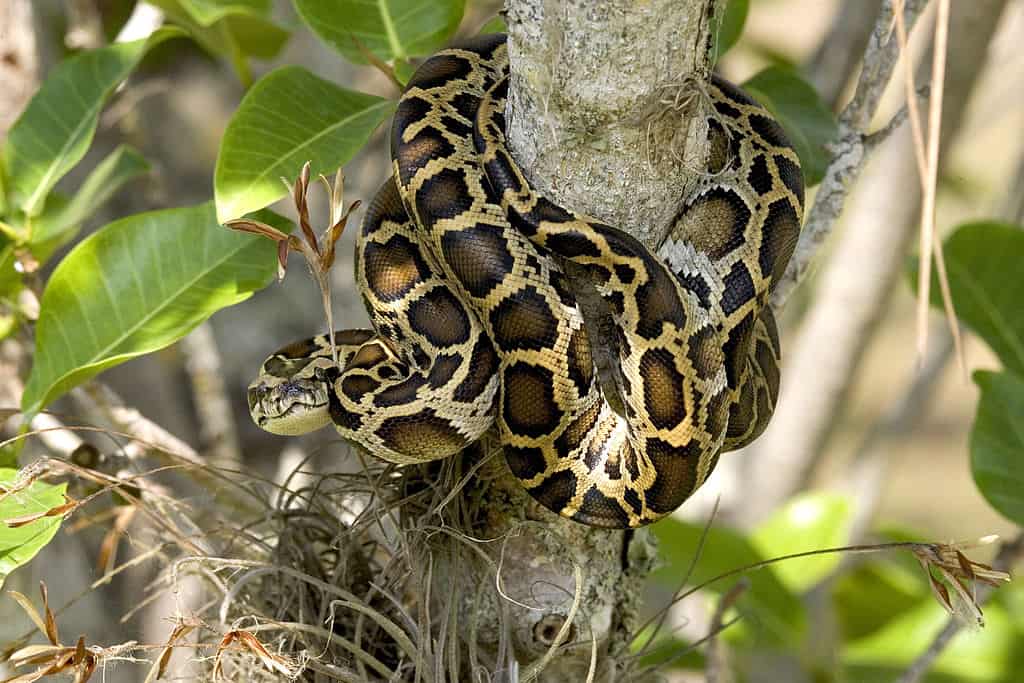Florida, known as the Sunshine State, isn’t just known for its beautiful beaches, diverse culture, and vibrant nightlife. It also holds a rather unusual title: the state with the most invasive species in the United States. A perfect storm of climate, geography, and human activity has allowed countless non-native species to thrive here, often to the detriment of local ecosystems.
Understanding Invasive Species

Invasive species are organisms that are introduced to a new environment where they are not native. Once there, they often outcompete native species for resources, disrupt habitats, and cause environmental and economic harm. Unlike native species, they do not have natural predators in their new environment, allowing their populations to grow unchecked.
Florida’s Unique Climate and Geography

Florida’s warm and humid climate closely resembles the native habitats of many invasive species. This subtropical environment offers year-round warmth, which is particularly attractive for reptiles and plants that require a warm climate to survive. Additionally, Florida is a peninsula with a long coastline and numerous waterways, providing ample access points for species to infiltrate and spread throughout the state.
The Role of Human Activity

Human activities have significantly contributed to the introduction and proliferation of invasive species in Florida. The state is a major hub for international trade and tourism, leading to frequent movement of people and goods. Many invasive species are unintentionally introduced through shipping containers, plants, and ornamental fish. Furthermore, the pet trade has also been a significant source of invasive animals, as exotic pets are often released into the wild when owners can no longer care for them.
The Pet Trade and Exotic Wildlife

The pet trade has introduced a plethora of non-native species to Florida. The Burmese python is perhaps the most infamous of these. Originally brought to the U.S. as exotic pets, many were released or escaped into the wild, where they have established breeding populations in the Everglades. Other notable invasive species from the pet trade include the green iguana and the Nile monitor lizard.
Impact on Native Ecosystems

The impact of invasive species on Florida’s ecosystems can be devastating. They can alter food chains, displace native species, and change the physical environment. For example, the Burmese python preys on a wide range of native species, including birds, mammals, and even alligators. This predation has led to a significant decline in the populations of some native animals.
Disruption of Local Economies

Invasive species also have economic implications. They can damage agriculture, decrease biodiversity, and increase costs for management and control efforts. For instance, invasive plants like the Brazilian pepper tree can overtake agricultural lands, impacting crop yields and requiring costly removal efforts.
Government Efforts and Legislation

The Florida government and other organizations have implemented various measures to control the spread of invasive species. This includes legislation aimed at regulating the trade and transport of potentially invasive plants and animals, as well as funding for research and management programs.
Community Involvement and Education

Public education and community involvement are crucial in the fight against invasive species in Florida. Programs designed to educate residents and tourists about the impact of invasive species can encourage responsible behavior, such as not releasing exotic pets into the wild and reporting sightings of invasive species to authorities.
Technological Innovations in Control Methods

Recent advancements in technology have provided new tools for managing invasive species. Techniques such as environmental DNA (eDNA) testing can help detect the presence of invasive species in water bodies before they become established. Additionally, the use of drones and satellite imagery aids in monitoring and mapping the distribution of invasive plants and animals.
Species Success Stories

Efforts to manage invasive species are not always in vain. There have been success stories where concerted efforts have led to significant reductions in invasive populations. For instance, collaborative efforts have helped in controlling the population of the giant African land snail, which threatened Florida’s crops and human health.
Future Challenges and Strategies

Despite these successes, new invasive species continue to arrive, and existing ones persist. Climate change may exacerbate the problem by altering habitats and making them more suitable for invasive species. Continued investment in research, education, and management strategies will be crucial to address these future challenges effectively.
The Global Perspective

Florida’s situation is a microcosm of a global issue. Invasive species pose a threat to ecosystems around the world, and international cooperation will be vital in controlling their spread. Lessons learned in Florida can provide valuable insights into how other regions can combat similar issues.
In conclusion, Florida’s battle with invasive species is a testament to the complex interplay between natural environments and human activity. Understanding and addressing this challenge requires a comprehensive approach involving government action, technological innovation, and community engagement. By learning from Florida’s experiences, we can hope to protect native ecosystems and biodiversity both within the state and beyond.
- The Animal That Can Hear Sounds From Over 100 Miles Away - August 22, 2025
- The Animal That Can Walk on Water—And It’s Not What You Think - August 22, 2025
- How Adorable Is It That Monkeys Use Leaves as Toys? - August 22, 2025

